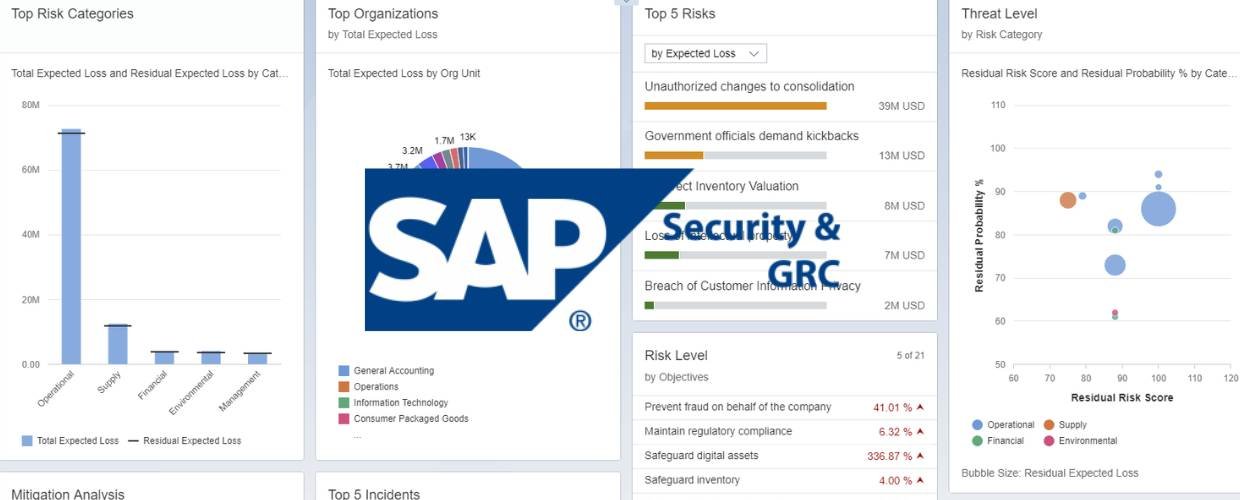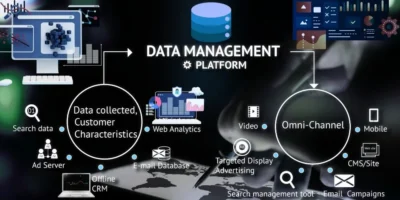In today’s ever-changing business landscape, organizations face many risks that can significantly impact their operations, reputation, and financial stability. In this article, we will explore the features and capabilities of SAP Risk Management and how it empowers organizations to navigate uncertainties and achieve their strategic objectives confidently.
What is SAP Risk Management?
SAP Risk Management is integral to the SAP Governance, Risk, and Compliance (GRC) suite. As a comprehensive risk management solution, it enables organizations to proactively identify, assess, and mitigate risks across various business functions. The platform offers a centralized platform where organizations can collaborate, analyze, and respond to risks in real-time. It ensures that risk management is integrated into decision-making processes at all levels.
As risks evolve and become more complex, organizations need a robust risk management solution to proactively identify, assess, and mitigate potential threats. SAP Risk Management, a leading solution in the market, has emerged as a powerful tool to help organizations effectively manage risks and enhance their business resilience. The platform caters to organizations of all sizes and industries, from small businesses to large enterprises. With its user-friendly interface and powerful features, the risk management solution empowers businesses to navigate complex risk landscapes effectively and make informed decisions supporting long-term sustainability and growth.
Recommendations and Ratings
EXPERT RECOMMENDATIONS
Overall
-
Easy-of-Use - 70
-
Feature and Functionality - 85
-
Customer Support - 75
-
Setup and Integration - 70
-
Value of Money - 75
User Review
3.71 (7 votes)The Significance of Risk Management
Effective risk management is a crucial aspect of organizational success. In today’s dynamic and interconnected business environment, risks can arise from various sources, including economic uncertainties, regulatory changes, cyber threats, supply chain disruptions, and geopolitical events. Unmanaged risks can lead to financial losses, reputational damage, legal liabilities, and operational disruptions, affecting an organization’s bottom line and stakeholder trust.
A proactive and strategic approach to risk management enables organizations to identify and assess potential risks, develop appropriate risk mitigation strategies, and align risk responses with business objectives. By integrating risk management into decision-making processes, organizations can achieve a competitive advantage, build resilience, and capitalize on emerging opportunities.
Key Features and Capabilities
SAP Risk Management offers many features and capabilities to support organizations in risk management endeavors. Let’s explore some key components that make the platform a leading solution in the market.
Risk Identification and Assessment
SAP Risk Management allows organizations to identify and assess risks comprehensively. The platform enables businesses to define risk categories, evaluate likelihood and impact, and quantify risk exposures. Risk assessments can be performed across different business units and processes, providing a holistic view of the organization’s risk landscape.
Risk Mitigation Strategies
Once risks are identified and assessed, SAP Risk Management supports the development of risk mitigation strategies. The platform facilitates the creation of risk response plans, including avoidance, acceptance, mitigation, and transfer strategies. Organizations can prioritize and implement effective risk management actions by aligning risk responses with business objectives.
Compliance and Control Monitoring
SAP Risk Management integrates compliance and control monitoring capabilities, allowing organizations to track adherence to regulatory requirements and internal controls. The platform offers tools to monitor compliance with industry standards, legal obligations, and internal policies, reducing the risk of non-compliance and associated penalties.
Scenario Analysis and Modeling
SAP Risk Management supports scenario analysis and modeling better to understand the potential impact of risks on business outcomes. The platform allows organizations to simulate various risk scenarios, assess their consequences, and evaluate the effectiveness of risk responses. Scenario analysis enhances risk forecasting and helps organizations make proactive risk management decisions.
Real-time Reporting and Dashboards
The platform provides real-time reporting and interactive dashboards that offer insights into the organization’s risk profile. These reports and dashboards facilitate data-driven decision-making and enable stakeholders to monitor risk trends, risk exposures, and risk response effectiveness. Real-time risk visibility empowers organizations to respond promptly to emerging risks and opportunities.
Risk Integration with Strategic Planning
SAP Risk Management ensures that risk management is seamlessly integrated into strategic planning processes. Organizations can align risk management with their long-term vision and goals by identifying risks that may impact strategic objectives. Risk-informed decision-making enhances strategic planning and supports the achievement of business objectives.
Benefits of SAP Risk Management
Let’s explore SAP Risk Management’s benefits to organizations seeking to enhance their risk management practices.
Comprehensive Risk Visibility
SAP Risk Management gives organizations a centralized view of their risk landscape, enabling comprehensive risk visibility across the entire organization. This holistic view allows businesses to identify interdependencies between risks and assess their potential impact on various business functions.
Proactive Risk Mitigation
By facilitating risk identification, assessment, and response planning, SAP Risk Management empowers organizations to take proactive measures to mitigate potential risks. Proactive risk management reduces the likelihood of incidents and helps organizations avoid financial losses and reputational damage.
Regulatory Compliance and Reporting
SAP Risk Management simplifies regulatory compliance management with integrated compliance and control monitoring capabilities. The platform ensures that organizations stay up-to-date with regulatory changes and adhere to industry standards, reducing non-compliance risk.
Data-driven Decision-making
Its real-time reporting and dashboards enable data-driven decision-making at all levels of the organization. Stakeholders can access up-to-date risk data, assess risk trends, and evaluate the effectiveness of risk responses. Data-driven decision-making enhances risk-informed strategies and supports business growth.
Improved Collaboration and Accountability
SAP Risk Management fosters collaboration among stakeholders involved in risk management. The platform’s user-friendly interface and real-time reporting encourage engagement and participation in risk-related activities. Enhanced cooperation ensures that all relevant parties are aligned in managing risks effectively.
Scalability and Flexibility
The platform is designed to accommodate the unique risk management needs of organizations of all sizes and industries. The platform’s scalability allows it to grow with the organization, adapting to changing risk landscapes and business objectives. SAP Risk Management’s flexibility enables organizations to tailor the software to match their specific risk management processes and reporting needs.
Conclusion
SAP Risk Management is a robust and comprehensive solution for organizations seeking to enhance their risk management practices. The platform empowers businesses to achieve comprehensive risk management and governance practices by centralizing risk information, streamlining compliance management, and providing real-time insights. With SAP Risk Management as their trusted risk management partner, organizations can confidently navigate uncertainties, build resilience, and capitalize on emerging opportunities. As the business landscape evolves, the risk management solution remains at the forefront of revolutionizing risk management, ensuring organizations thrive in a dynamic and challenging risk environment. Through its user-friendly interface, scalability, and robust features, SAP Risk Management equips organizations with the tools they need to embrace risk as an opportunity for growth and success.













